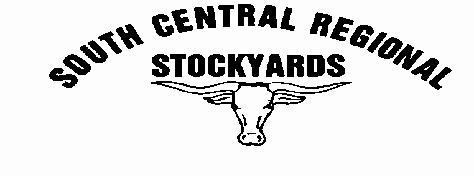
4 minute read
Beef Checkoff News
Your BEEF CHECKOFF NEWS
How Imports Add Value to American Beef Reprinted with permission from Drovers. By Greg Henderson, Editor
Without imported lean trimmings, cow slaughter would need to double The U.S. is the fourth-largest global exporter of
beef in volume, with the past two years producing total export revenues, in excess of $8 billion per year. That ads $320 to the value of every U.S. fed steer and heifer.
The U.S. is also the global leader in beef imports.
Those two facts seem incompatible to many. Why, critics ask, does the U.S. import beef? The coronavirus disruption caused historic slowdowns at packing plants leaving thousands of cattle without a final home, abruptly ending the import of beef, however, is not a remedy for the disruption caused by COVID- 19 and would only further reduce the value of U.S. cattle.
Gregg Doud, chief agricultural negotiator in the Office of the U.S. Trade Representative, offered his perspective on imports during a webinar sponsored by the Oklahoma Cattlemen’s Association.
“Advocates claim that if you decrease imports that decreases the supply of beef in the U.S., which raises the price of cattle. That’s a fair point,” Doud says, “except, name me another industry that gets ahead by shrinking their industry. If you shrink your industry, how are you
Hwy 42 West • Vienna Missouri 65582
45 Miles South of Jefferson City Selling All classes of Cattle Wednesday • 10:00 a.m. Featuring ‘Star-Vac Program’ Cattle Weekly DVAuction Service for convenient online viewing & bidding For More Information Call… David Patton Office Ross Patton Bill Patton 573-308-6655 573-422-3305 573-308-6657 573-308-6658 Visit our website: www.scrsvienna.com or E-mail us: scrsvienna@gmail.com
“Make South Central your Livestock Market”
going to compete with (other proteins)? Shrink your industry, and you will need fewer packing plants, not more.”

Indeed, analysts say beef imports actually add value to U.S. beef.
“To understand beef imports in the U.S. you have to understand the hamburger market,” says Oklahoma State University agricultural economist Derrell Peel, speaking during the May webinar. “Ground beef
consumption in the U.S. is about 26 lb. per capita, which is about 45% of our total beef consumption.”
Satisfying America’s taste for hamburger requires the import of beef trimmings.
“Despite the common mischaracterization around beef imports, the bulk of imported beef consists primarily of lean beef and/or trimmings,” says Nevil Spear, an analyst and consultant based in Bowling Green, Ky. “Those imports aren’t competitive (apples to apples); they’re complementary (apples and oranges), being blended with 50/50 trim to make salable ground beef.”
Peel notes fed steers and heifers produce about 140
lb. of trimmings, which is about 64% lean. To that, processors will add about 190 lb. of lean trim. The domestic source of that lean is primarily cull cows and slaughter bulls. Imports are the other source of lean trimmings that make up the U.S. total, producing about 334 lb. of ground beef per carcass for an average 79% lean ground.
“Put it all together, ground beef production represents a little bit over 30% of total beef production in the US. Imported beef makes up about 26% of that total ground beef production,” Peel says.
Yet, without imported lean, Peel said the U.S. would need to double domestic cow slaughter to generate enough lean trim to satisfy domestic demand for hamburger.
“So, out of the total beef imports, lean trimmings represent somewhere between 70% and 75% of total beef imports,” he says.
There are options to the current system, Peel says, though they’re not preferable.
“We could decrease ground beef production by 45%, simply because we don’t have enough lean. Those fatty trimmings from fed cattle would go into rendering and be sold as tallow prices rather than hamburger prices.”
A second option would be to grind more whole muscle cuts.
“We could grind more chucks and rounds and products we currently use other ways because they have more value,” Peel says. “We could also take 10% to 15% of our cattle and let them run on range until they’re two years of age and sell them like cull cows to get some additional 90% lean.”
The U.S. beef industry could do those things, but “All of those options would result in lower value for the cattle industry. Imported beef makes fed
cattle worth more because it gives us the ability to sell more fat in the form of ground beef,” Peel says.
Ambassador Doud emphasizes trade is a two-way street that generates a $2 billion trade surplus.
“My favorite topic involving beef trade is tongue,” Doud says. “We can sell beef tongue in the U.S. for 30¢ a pound, or we can sell it to Japan for $7 a pound.”
Doud also says the beef trade with Canada is more than just feeder cattle and fed cattle coming across the border. “Half of the imports from Canada, generally speaking, are either cull cows or bulls or 50/50 trim. The largest share of that goes to processors in California,” where they are turned into hamburger, he says.
The U.S. also sells nearly $1 billion of beef to Canada each year, and logistics represent much of the rationale. The majority of Canada’s population is in the east, and Grand Island, Neb., is 1,000 miles closer to Toronto than Calgary, location of the nearest Canadian packer.
“During the past 10 years, the beef industry’s cumulative trade balance is nearly $13.5 billion to the positive; export value exceeds import value,” Spear says. “The benefit is self-explanatory.”






